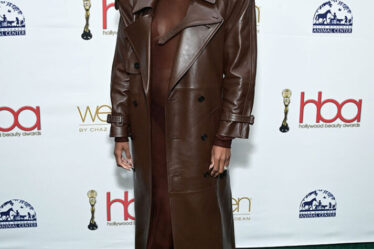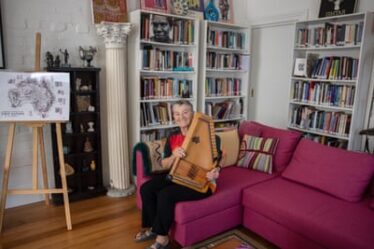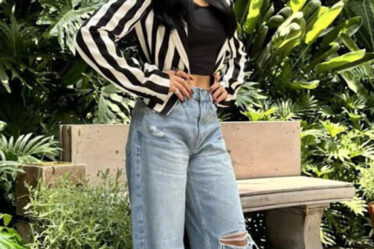Whatever you do, don’t call the Willy Vanderperre show that opens on April 26 at MoMu, Antwerp’s fashion museum, a retrospective. “I’m trying to avoid that word,” the photographer insists. “It feels like you’re embalming yourself. I still feel like I have loads to tell people.”
Vanderperre prefers that we consider it a career overview in 250 pictures. There’s deliberately nothing which hasn’t already appeared in magazines like AnOther, Vogue, i-D, Love and W or campaigns for brands such as Prada, Dior and Jil Sander. “It had to be an image that people knew if you were interested in the work,” he explains. And, for anyone who doesn’t know Vanderperre, he’s confident the work will be a fine introduction.
It will certainly strike chords. The overarching theme of Vanderperre’s three decades of image-making has been youth, and there’s scarcely a subject more universal, more sure to elicit an emotional response. You’ve either got it, or you’ve lost it. But for Vanderperre, the condition of “youth” is determined less by age than emotional state.
The oldest image in the exhibition dates from 1998, so there are none of his early efforts. Too bad. I’d like to have seen what he considers to be his first picture. “I was 14 or 15, it was a self-portrait, white backdrop, me in a black turtleneck with very long hair, because at that time I was kind of shy and I hid myself with long hair. It was a profile, already a little serious.”
It sounds like the purest prototype for everything that followed. Look at the poster for the MoMu show: Julia Nobis, the Australian model who has been a favourite for a decade, could be the glamorous mutation of a teen Willy. That same semi-profile against a white backdrop, with the sideways glance hinting at secrets hidden, amounts to a signature Vanderperre look, whether his subject is a boy or a girl. He calls it “honesty.”

Bruce Weber once told me that he photographed what he wished he was. There was a logic to that, coming from an older man whose subject was also often youth. Vanderperre’s approach is different. “Not photographing what you wish you were, but maybe the world I would like to live in, the person I would like to be my friend or hang out with. That’s the connection I try to have… it’s borderline pretentious saying ‘I understand you’ because I’m 53 years old, I’m fully aware of that. It’s impossible to understand youth nowadays. So it’s an interpretation of youth through my eyes.”
The MoMu show inevitably showcases Vanderperre’s longest working relationships, with the designer Raf Simons, the make-up maestro Peter Phillips and the stylist Olivier Rizzo, who has been Willy’s partner since they fell in love on the first day of school at Antwerp’s Royal Academy of Fine Arts in the early 90s. They all shared their youth, now they share their interpretation of it, often working as a team.

“My goal always when I walk into a studio is to make the best picture I’ve ever made,” says Vanderperre. “The beauty of working with somebody you’ve worked with for a substantial time in your life is you push yourself even harder at that point because they know what you can do. And they know they have to deliver. There’s something thrilling about it.”
I’ve always felt that thrill most in Vanderperre’s evolving relationship with his models, who, at this point, are almost his repertory company, like a benign version of Warhol’s Factory. The transience of youth is traditionally the trigger for melancholic reflection, and melancholy has always struck me as a distinctly Belgian emotion, particularly as it is reflected in the work of the country’s greatest artists. But when I project that darkness onto Belgian fashion, Vanderperre will have none of it.

He’s worked with many of his muses since they were in their mid-teens. Through his lens, they have become the faces that help define contemporary fashion: Nobis, Mica Argañaraz, Rianne van Rompaey, Kiki Willems, Jonas Glöer, Paul Hameline, Leon Dame. “They’re not young anymore but they still carry that same youthful spirit,” says Vanderperre. Then he catches himself. Maybe it’s not youth but youthfulness that engages him most in his sixth decade. “It’s different from the youth obsession, the beauty obsession we live in nowadays. Youthfulness is something we should cherish.”
Where he says youthfulness, I suggest curiosity. “Curiosity is a beautiful word,” he agrees. “When you are in your teens, you want to grow old as quick as you can, every experience is new, you’re so hungry, you want more, more, more. And then you come to what is considered to be middle-aged, and you’re still curious. I think we will have it in our genes forever, so there’s always that hunger, you want to learn more, you want to read more, see more, experience more. The hunger for tomorrow for me is huge, but it’s not a weight. It’s more like I’m living that time and it will come and I will immerse myself in it.”

But what about this time? It’s so fucked up that immersion feels like a shortcut to suicide. And the loss of innocence, the toll traditionally exacted by the road from youth to adulthood, has been honed to hell by social media. “The loss of innocence is something that youth is about,” Vanderperre acknowledges. “That’s maybe the beauty of it, and trying to capture that moment is the most beautiful thing you can do as a photographer. To try to bring that emotion into an image, whether it’s an imaginary world or a stark white studio.”
It’s a huge subject, and he sounds remarkably sanguine about how fraught it’s become. “There’s something beautiful about technology, it pushes us forward. Once we embrace it and we learn to work with it, it can only get better.” Maybe there was a prelapsarian moment before social media but Vanderperre insists he lives in the now, and the MoMu exhibition is “a statement of the times we live in.” And maybe, when he describes his youth, it wasn’t so prelapsarian after all. “The cold war: the bomb could fall. AIDS: you didn’t know if kissing a boy would actually kill you. It was all very frightening.”

He grew up in a small town in the southwest of Belgium. His parents worked hard and his sister was five years older, so he was on his own a lot. There was a wood-burning stove in the living room and Willy would have discussions with his reflection in its glass front, as you would with an imaginary friend. “I was always alone but I never felt alone… I think that’s maybe why I always feel like I’m a happy person, I can live with myself and be alone for days with my thoughts.” If you’ve ever wondered about the introspective essence of Vanderperre’s imagery, there’s your answer. But when he broke loose, he did it in style as an out and proud club kid, in places that played the kind of Belgian and Dutch dance music that was driving raves all over the world. TECHNO!
To be young, high, dancing in some crepuscular space to a pulverising beat was as close to paradise on earth as it was possible to get in the early 90s, and that Utopian spirit continues to infuse Vanderperre’s work. He’s subtitling his exhibition “prints, films, a rave and more…” Opening night will feature a rave showcasing Richie Hawtin and Clara 3000, techno favourites of the Antwerp brigade. Later in the show’s run, there’ll be “nocturnes,” where musicians will play, alongside festivals of films that have influenced him. The effort to engage has all the irresistible energy of youthful idealism. “Maybe it’s my generation,” Vanderperre wonders, “always against the current, the acceptable norm. Can we be the opposite?”

But while he insists he will always be pushing against every boundary, every restriction, he accepts that he’s less stubborn than he used to be. “I think maybe in the beginning you are really trying hard to get your message over, almost like having a loud voice, even if the image you wanted to do was a very quiet one with a very quiet emotion. Maybe now we are even more introspective and even more searching to bring the true value of emotion into a fashion picture, whether it’s a campaign or editorial. Also because the world needs it now. But maybe if you ask me that question in a year I’ll have a different answer.”
Still, fashion has become a social media beast, and I can’t imagine a year will make much difference to Vanderperre’s opinion. He accepts his ongoing challenge: to bring fashion back to something that is a little bit more condensed, a little bit more heartfelt, and a little bit more honest and intimate. “We’re not going to change the world. But you just want to touch people. Maybe that’s it, nothing more than that.”



